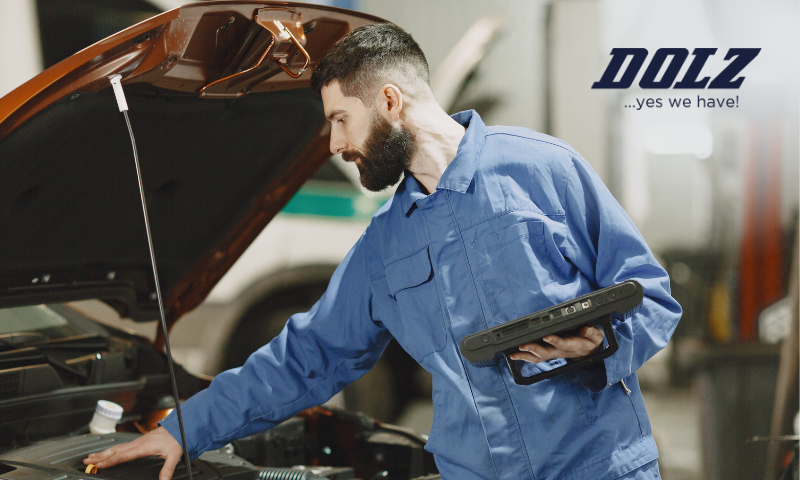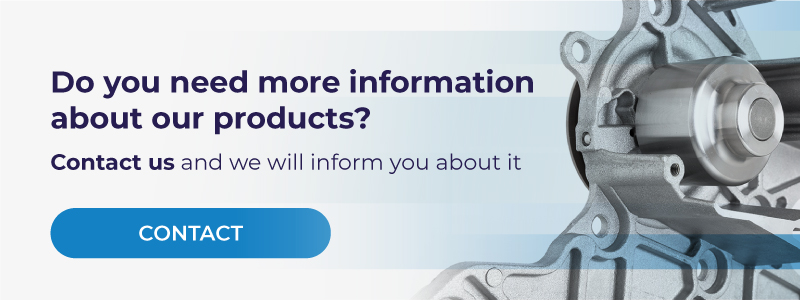https://www.idolz.com/en/expert-advice-when-should-you-carry-out-a-car-timing-belt-replacement/100% of vehicles are made up of different moving parts that are subject to constant and therefore require regular maintenance, mainly for two reasons: to keep our car in good working order and to prevent future breakdowns. For this reason, we are going to give tips for professionals when doing a car parts check. Keep reading!
How often is it recommended to do a car parts check?
Most manufacturers recommend having a full car service once a year or every 12,000 miles, whichever comes first. But this depends on every vehicle and how it is driven. However, when it comes to a car parts check, it largely depends on which vehicle component we are talking about.
Therefore, to contribute to road safety and minimize the risk of breakdowns, we can implement a maintenance program. Above all, checking the following elements.
5 checks a professional should be carrying out guarantee the good condition of our vehicle.
To maximize the lifespan and performance of a vehicle, here is a list of items you should check, always taking into consideration timing and seasonality. Be sure to always follow the vehicle’s maintenance schedule and service interval record for an accurate car spares check.
Fluids and oil
In general, the first step to keeping a vehicle in top shape is by making sure the following fluids are full, fresh, and compatible with the vehicle’s model and engine. You must confirm that the fluid is at the right level and that it shows no signs of leakage.
- Motor Oil – Engine oil is responsible for ensuring that the performance of all other parts runs smoothly. With its diverse motion features, being well lubricated is essential. With time, the oil becomes less viscous, contaminated with impurities, and at times too thin to lubricate the engine. Remember that different types of engines require different engine oil.
- Cooling and anti-freeze fluid – Radiator coolant and anti-freeze fluid prevent the vehicle’s engine from overheating in extreme heat and from freezing in extreme cold. So, it is a vitally important element for the engine. This does not generate corrosion within the system or cause long-term damage.
- Brake Fluid – Designed to amplify a driver’s foots force on the brake pedal and turn it into pressure on the car’s brakes. Without brake fluid, it would take a lot more than just a foot to stop the vehicle car.
Recommended: How to detect cooling circuit problems
Tires
Uneven tires can give valuable insights into any problems with the front-end assembly of a vehicle. Check tyres for general wear and tear, splits or bulges, and crucially tread depth. Minimum tread level is usually 1.6mm, although in some very cold scenarios, it can be advisable to have 3mm of tire tread to help with traction and grip.
Checking tire pressure is of extreme importance for driver safety. If a vehicle does not have a tire pressure sensor or TPMS, this can be done with a tire gauge. Having the right tire pressure (in accordance to the manufacturer’s manual) helps a vehicle improve fuel efficiency and correct alignment.
It is important to know that tires do not wear evenly on their own. The front tires and the back tires carry different loads on different vehicles. The best way to ensure more even wear and tear is to get the tires rotated during maintenance.
Do not forget to check the tread of the tires with a simple penny test and also, check that the pressure is okay. Bear in mind that the tire pressure keeps changing with the change in temperature outside so, keep a track of it.
Brakes
In terms of safety, the braking system can be considered as one of the most important parts of a vehicle. You must start by asking yourself if all parts are still in order: brake pads, brake discs, and brake hoses.
Friction usually wears down brakes over time, resulting in pitting or corrosion. So, in order to maintain optimum brake performance, brake discs are the places to check. For the brake pads, their thickness is the spot that must be checked, since friction will also affect these over time.
Suspension and Steering
The suspension system connects the wheels to the chassis and uses springs, shock absorbers, link bars and control arms to cushion impact and allow relative motion. On the other hand, the steering system helps the driver maneuver in tight spaces.
Together, they are what we call the front-end assembly of a vehicle. The structure of these two interconnected spare parts should be tight, solid and secure, with metal and soft components in good condition.
Before even starting the inspection, carry out a bounce test by pushing up and down to get the body bouncing. Once you let go, it should stop bouncing and stabilize within two bounces. If it does not, then the shocks or struts are likely to need replacement.
Take into consideration that these are the shock absorbers in a vehicle; every time drivers turn their cars over a bump or around a bend, the shock absorbers are flexing and in use. With damaged or worn shocks, the automobile will lose up to 25% in the braking system performance, which could lead to serious issues when driving.
Timing Belt
The timing belt synchronizes the four strokes of the engine, the opening and closing of the intake and exhaust valves. It is very important to follow the advice of the vehicle manufacturer because, as it is an element that wears out, its breakage can cause serious and sometimes irreparable damage to the engine.
It is practically impossible for a driver to detect its premature deterioration, so the best precaution is to replace it, both the belt and the peripheral elements or those linked to the belt, such as the tensioners, pulleys or the water pump. This will guarantee a long useful life for our vehicle.
Keep reading: Expert advice: when should you carry out a car timing belt replacement
Dolz spare parts, more quality, less replacements
Known for being one of the European market leader in the manufacture of water pumps for the aftermarket, Industrias Dolz has a wide range of spare parts and references, available in our electronic catalogs for passenger cars and industrial or commercial vehicles.
Our pioneering and automated manufacturing system allows us to guarantee optimum quality and ISO compliance in all of our car parts. With less than 0.05% of returns, choosing OE quality over quantity will allow you to focus on preventive maintenance while requiring far less replacements. Car parts check will be faster and more efficient.
Feel free to search through our multi-product website and learn more regarding our largely convenient distribution kits. Do not hesitate to contact us if you need any kind of tailored advice!


